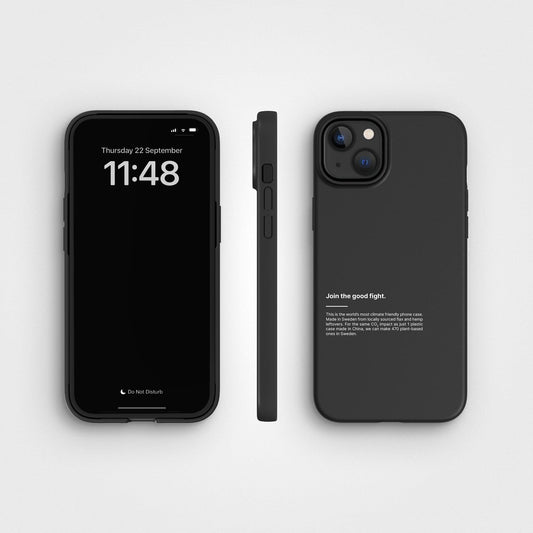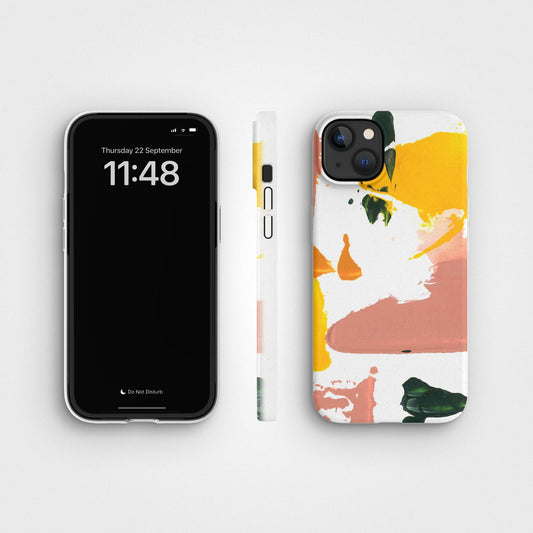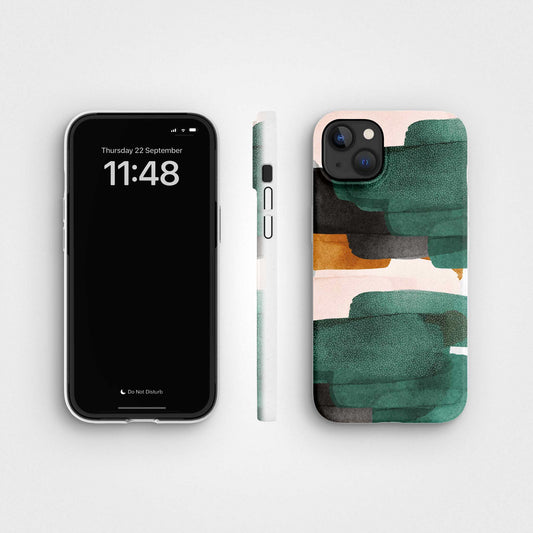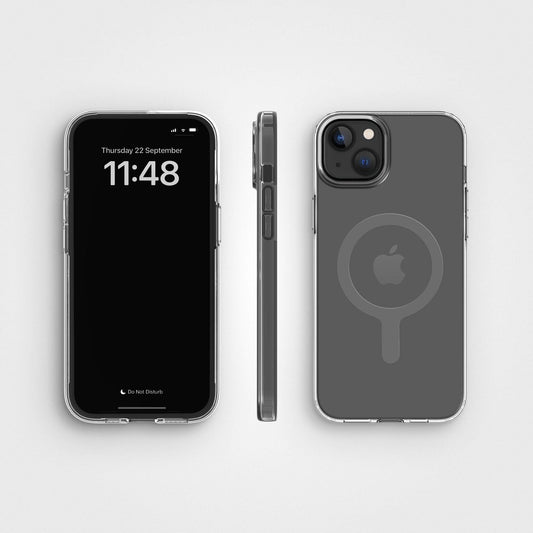Haben Sie schon einmal ein Produkt mit der Aufschrift „umweltfreundlich“ gekauft und später herausgefunden, dass die Angaben irreführend oder völlig falsch waren?
Wenn ja, sind Sie Opfer von Greenwashing geworden. Aber was ist mit der anderen Seite der Medaille? Haben Sie schon einmal darüber nachgedacht, dass einige Unternehmen möglicherweise wichtige Umweltinformationen über ihre Produkte oder Dienstleistungen verbergen? Dies wird als „grünes Schweigen“ bezeichnet.

Einfach ausgedrückt spricht man von Greenwashing, auch bekannt als „grüner Schimmer“, wenn eine Organisation den Menschen wissentlich oder unwissentlich vorgaukelt, dass sie mehr für die Umwelt tut, als sie tatsächlich tut. Für viele Unternehmen, die umweltbewusste Kunden gewinnen möchten, kann es verlockend sein, in Marketing- und PR-Taktikaktivitäten zu investieren, die ihre Produkte oder ihre Marke als nachhaltig darstellen, ohne jedoch die harte Arbeit (und die ist hart) tatsächlich zu leisten kommt mit der Untermauerung ihrer Behauptung.
Der Begriff Greenwashing wurde erstmals in den 1980er Jahren von Jay Westerveld geprägt, einem amerikanischen Umweltschützer, der sagte, der Begriff sei ihm eingefallen, als er über die Behauptungen eines Hotelresorts nachdachte, durch die Wiederverwendung von Handtüchern zum Schutz von Korallenriffen beizutragen. Wie Sie sich vorstellen können, ist dies jedoch keineswegs der größte Greenwashing-Skandal aller Zeiten.
Woher wissen Sie, was umweltfreundlich bedeutet?

Was ist ein Beispiel für Greenwashing?
„Schau mir in die Augen, schau mir in die Augen, die Augen, die Augen, nicht um die Augen herum, schau nicht um meine Augen herum, schau mir in die Augen, du bist unter.“ - Kenny Craig.
Das obige Zitat stammt von Kenny Craig, dem Hypnotiseur von Matt Lucas, aus der britischen Sitcom Little Britain. Der skrupellose Kenny hypnotisiert Menschen dazu, Dinge für ihn zu tun, beispielsweise 50-Pfund-Scheine auf der Straße zu verteilen. In gewisser Weise ist dies vergleichbar mit Greenwashing, wenn Unternehmen und Organisationen absichtlich Greenwashing-Taktiken anwenden, beispielsweise „ Werbung “ oder falsche Behauptungen, um Kunden mit einem falschen umweltfreundlichen Eindruck zu locken.
Ein berühmtes Beispiel für unternehmerisches Greenwashing ist der Abgasskandal des deutschen Automobilherstellers Volkswagen, auch bekannt als Dieselgate. Volkswagen baute Geräte in seine Reihe von „sauberen Diesel“-Autos ein, die es ihnen ermöglichten, Abgastests zu umgehen und eine positive Umweltleistung zu behaupten, obwohl in Wirklichkeit das Gegenteil der Fall war. Der Skandal wurde schließlich aufgedeckt und Volkswagen war gezwungen, Millionen von Autos zurückzurufen, was große finanzielle und rufschädigende Folgen hatte.

Unterschied zwischen Greenwashing und Green Hushing
Beides sind Formen der Irreführung der Öffentlichkeit und können schwerwiegende Folgen für die Umwelt haben. In diesem Blogbeitrag beleuchten wir die Geschichte und Arten von Greenwashing und Green Hushing und geben Tipps, wie Sie vermeiden, auf diese Taktiken hereinzufallen.
Greenwashing
Es gibt es schon seit Jahrzehnten und hat sich immer weiter verbreitet, da sich die Verbraucher immer mehr Gedanken über die Umwelt machen und nach umweltfreundlichen Produkten suchen. Unternehmen verwenden möglicherweise eine vage oder irreführende Sprache oder betonen kleine Umweltvorteile, während sie größere negative Auswirkungen ignorieren, um ihre Produkte umweltfreundlicher erscheinen zu lassen, als sie tatsächlich sind.
Grünes Schweigen
Dabei geht es darum, wichtige Umweltinformationen, wie etwa den Einsatz schädlicher Chemikalien oder nicht nachhaltige Praktiken, vor den Verbrauchern zu verbergen. Dies kann es für Verbraucher schwierig machen, fundierte Entscheidungen über die von ihnen gekauften Produkte und die von ihnen unterstützten Unternehmen zu treffen.
Geschichte der Begriffe:
Stellen Sie sich Folgendes vor: Es sind die 1980er Jahre und Umweltschutz wird zu einem heißen Thema. Plötzlich versuchen überall Unternehmen, auf den umweltfreundlichen Zug aufzuspringen. Doch anstatt ihre Produkte und Praktiken tatsächlich zu ändern, greifen viele Unternehmen auf eine noch heimtückischere Taktik zurück: Greenwashing.
Der Begriff „Greenwashing“ wurde als Reaktion auf diesen Trend geprägt, dass Unternehmen aus Marketinggründen vage oder übertriebene Umweltaussagen machen. Es ist, als würde man ein Produkt mit einem grünen Etikett versehen und hoffen, dass die Verbraucher glauben, es sei besser für die Umwelt, als es tatsächlich ist.
Heute ist Greenwashing ein komplexes und weitverbreitetes Problem. Unternehmen wenden viele hinterhältige Taktiken an, um ihre Produkte umweltfreundlicher erscheinen zu lassen, als sie tatsächlich sind. Einige verwenden eine vage oder irreführende Sprache, während andere ihre Verpackungen mit umweltfreundlichen Symbolen versehen, ohne dass eine echte Zertifizierung vorliegt.
Auch wenn sich die Taktiken des Greenwashing und Green-Hushing im Laufe der Zeit weiterentwickelt haben, bleibt das zugrunde liegende Ziel dasselbe: „Verbraucher zu täuschen und Produkte umweltfreundlicher erscheinen zu lassen, als sie tatsächlich sind.“ Aber mit ein wenig Wissen und einer gesunden Portion Skepsis können Verbraucher lernen, diese Taktiken zu erkennen und fundierte Entscheidungen zu treffen, die tatsächlich dem Planeten zugute kommen.
Wie erkennt man Greenwashing oder Green Hushing?
Als Unternehmen, das sich der Nachhaltigkeit verschrieben hat, wissen wir, dass unsere Kunden daran interessiert sind, umweltbewusste Entscheidungen zu treffen. Aber bei so vielen Produkten, die behaupten, umweltfreundlich zu sein, ist es schwer zu wissen, wem man vertrauen kann. Deshalb ist es wichtig, sich der verschiedenen Greenwashing- und Green-Hushing-Methoden bewusst zu sein, damit Sie sie erkennen und fundierte Entscheidungen treffen können.
Hier sind ein paar gängige Taktiken, auf die Sie achten sollten:
1. Vage oder unbegründete Behauptungen: Hüten Sie sich vor Unternehmen, die mehrdeutige oder nicht überprüfbare Umweltaussagen machen, indem sie beispielsweise Begriffe wie „völlig natürlich“, „frei von Chemikalien“ oder „umweltfreundlich“ verwenden, ohne konkrete Details oder Beweise anzugeben.
2. Irrelevante Empfehlungen oder Kennzeichnungen: Nur weil ein Produkt ein grünes Blattlogo oder von der Natur inspirierte Bilder auf der Verpackung trägt, ist es nicht automatisch umweltfreundlich. Seien Sie vorsichtig bei Empfehlungen von Prominenten oder Influencern ohne wirkliche Erfahrung in Umweltfragen.
3. Mangelnde Transparenz: Grünes Schweigen geschieht oft dadurch, dass Unternehmen nicht genügend Informationen über ihre Produkte bereitstellen. Beispielsweise geben Unternehmen möglicherweise nicht bekannt, woher ihre Materialien stammen oder wie ihre Produkte hergestellt werden.
Wenn Sie sich dieser Taktiken und Beispiele bewusst sind, können Sie Greenwashing und Green Hushing in Aktion erkennen. Und als bewusster Verbraucher können Sie Entscheidungen treffen, die Unternehmen unterstützen, die sich wirklich für Nachhaltigkeit engagieren.
So recherchieren Sie und vermeiden Greenwashing-Unternehmen:
Für die Bewertung der Umweltansprüche eines Unternehmens ist die Durchführung eigener Recherchen von entscheidender Bedeutung. Hier sind ein paar Schritte, die Sie unternehmen können, um tiefer einzutauchen und die Wahrheit hinter Greenwashing aufzudecken. Darüber hinaus haben wir eine Liste vertrauenswürdiger Online-Shops erstellt, um Ihnen bei der Auswahl zu helfen. Hier können Sie einen Blick auf unseren Leitfaden zu den besten Öko-Shops werfen . freundliche Online-Shops .
Schauen Sie über die Marketingsprache hinaus: Gehen Sie tiefer und fragen Sie nach spezifischen Informationen über den Herstellungsprozess eines Produkts oder einer Dienstleistung, die verwendeten Materialien und die Auswirkungen auf die Umwelt. Transparente Unternehmen sollten auf Anfrage gerne detaillierte Auskünfte erteilen.
Bewerten Sie Transparenz und Rechenschaftspflicht: Unternehmen, die Greenwashing betreiben, zögern möglicherweise oder weigern sich, bestimmte Umweltinformationen bereitzustellen. Mangelnde Transparenz oder ausweichende Antworten können Warnzeichen sein.
Suchen Sie nach Zertifizierungen Dritter: Suchen Sie nach seriösen Zertifizierungen Dritter oder unabhängigen Bewertungen, um die Umweltaussagen eines Unternehmens zu bestätigen. Diese Zertifizierungen ermöglichen eine objektive Beurteilung der Nachhaltigkeitspraktiken eines Unternehmens.
Überprüfen Sie Nachhaltigkeitsberichte: Unternehmen, die ihre Nachhaltigkeitsbemühungen transparent machen, veröffentlichen häufig jährliche oder periodische Nachhaltigkeitsberichte. Bei agood company legen wir großen Wert auf Transparenz und veröffentlichen detaillierte Berichte, in denen wir unsere Umweltinitiativen, Fortschritte und Herausforderungen darlegen. Durch die Lektüre dieser Berichte können Sie Einblicke in unsere Nachhaltigkeitspraktiken gewinnen und deren Aussagen überprüfen.
Recherchieren Sie die verwendeten Materialien: Ein entscheidender Aspekt bei der Bewertung der Umweltauswirkungen eines Produkts ist das Verständnis der Materialien, aus denen es hergestellt ist. Das Unternehmen agood bietet detaillierte Informationen zu den von ihm verwendeten Materialien, wie zum Beispiel verantwortungsvoll beschaffte Inhaltsstoffe und umweltfreundliche Verpackungen.

Bewerten Sie die Lieferkette: Das Engagement von Unternehmen für Nachhaltigkeit geht über ihren eigenen Betrieb hinaus und umfasst ihre gesamte Lieferkette. Ein gutes Unternehmen legt großen Wert auf verantwortungsvolle Beschaffung und faire Handelspraktiken.
Die Untersuchung der Lieferkette eines Unternehmens kann dabei helfen, potenzielle Probleme aufzudecken, wie z. B. unethische Arbeitspraktiken oder umweltschädliche Prozesse, die auf Greenwashing hinweisen können.
Glücklicherweise gibt es ein vertrauenswürdiges Signal, das Ihnen dabei helfen kann, Unternehmen zu identifizieren, die sich wirklich für das Wohlergehen des Planeten einsetzen: die hoch angesehene B Corp-Zertifizierung. Wenn Sie aktiv nach Unternehmen mit B-Corp-Zertifizierung suchen, können Sie beruhigt sein, denn sie haben eine gründliche Bewertung durchlaufen, um die strengsten Nachhaltigkeitskriterien zu erfüllen.

Nicht alle Unternehmen sind heimtückische Greenwasher. Es gibt gute Unternehmen, die sich anstrengen und nachhaltige Geschäftsmodelle aufbauen. Einer unserer Favoriten ist BrewDog, ein Craft-Beer-Unternehmen aus Schottland. Vor Kurzem hat sich BrewDog konzertiert dazu verpflichtet, CO2-neutral zu werden und seinen Einfluss zur Förderung der Umweltbewegung zu nutzen. Im Zuge dessen begannen sie auch ihren Weg zur B Corp. Schauen Sie sich unbedingt unser #agoodcommunity-Interview mit Mitbegründer und CEO James Watt an, um mehr zu erfahren.
Eine gute Firma:
Im Gegensatz zu vielen anderen Unternehmen nehmen wir bei agood Greenwashing ernst und streben nach Transparenz in unseren Nachhaltigkeitsbemühungen. Wir machen keine vagen oder übertriebenen Behauptungen darüber, dass unsere Produkte umweltfreundlich sind; Stattdessen liefern wir konkrete Beweise zur Untermauerung unserer Umweltansprüche.
Beispielsweise veröffentlichen wir auf unserer Website ausführliche Nachhaltigkeitsberichte, in denen wir unsere Fortschritte bei der Erreichung unserer Nachhaltigkeitsziele darlegen. Wir glauben an Verantwortung und möchten, dass unsere Kunden genau wissen, was wir tun, um unsere Auswirkungen auf die Umwelt zu minimieren. Darüber hinaus informieren wir über die Umweltauswirkungen jedes unserer Produkte und geben Einzelheiten zu den verwendeten Materialien und deren CO2-Fußabdruck bekannt.
Aber unser Engagement für Transparenz endet hier nicht. Wir arbeiten aktiv daran, Greenwashing in der gesamten Branche zu bekämpfen. Wir setzen uns für klarere und einheitlichere Kennzeichnungsstandards ein und drängen auf mehr Ehrlichkeit und Genauigkeit bei den Umweltaussagen von Unternehmen. Wir legen außerdem großen Wert darauf, Verbraucher darüber aufzuklären, wie sie irreführende Umweltaussagen erkennen können, damit sie fundierte Entscheidungen treffen können. Wir versuchen unser Bestes, Begriffe zu verwenden, die unsere Arbeit wirklich widerspiegeln, und bieten unseren Kunden detaillierte Erklärungen zu diesen Begriffen. Hier erkennt man den Unterschied zwischen Upcycling und Recycling .
Durch einen proaktiven Ansatz beim Greenwashing wollen wir ein positives Beispiel für andere Unternehmen sein, dem es folgen kann. Wir glauben, dass Transparenz und Ehrlichkeit die Grundlage aller Nachhaltigkeitsbemühungen sein sollten. Für uns geht es nicht nur um das Endergebnis; Es geht darum, einen echten Unterschied für den Planeten und seine zukünftigen Generationen zu bewirken.
Unabhängig davon, ob Sie sich für ein gutes oder ein anderes Unternehmen entscheiden, empfehlen wir Ihnen, über Greenwashing-Behauptungen hinauszuschauen. Suchen Sie nach Unternehmen, die Beweise liefern, Berichte veröffentlichen und sich für Transparenz einsetzen. Indem wir unsere Bemühungen zur Bekämpfung von Greenwashing und zur Förderung von Transparenz hervorheben, hoffen wir, verantwortungsvolle und vertrauenswürdige Praktiken in der gesamten Branche zu inspirieren.
Denken Sie daran, dass Greenwashing ein kniffliges Thema sein kann, aber mit ein wenig Wissen und sorgfältiger Recherche können Sie vermeiden, Opfer falscher Umweltbehauptungen zu werden. Wählen Sie Unternehmen, die ihren Worten Taten folgen lassen und der Nachhaltigkeit höchste Priorität einräumen. Gemeinsam können wir einen bedeutenden Beitrag leisten und eine grünere Zukunft schaffen.
































